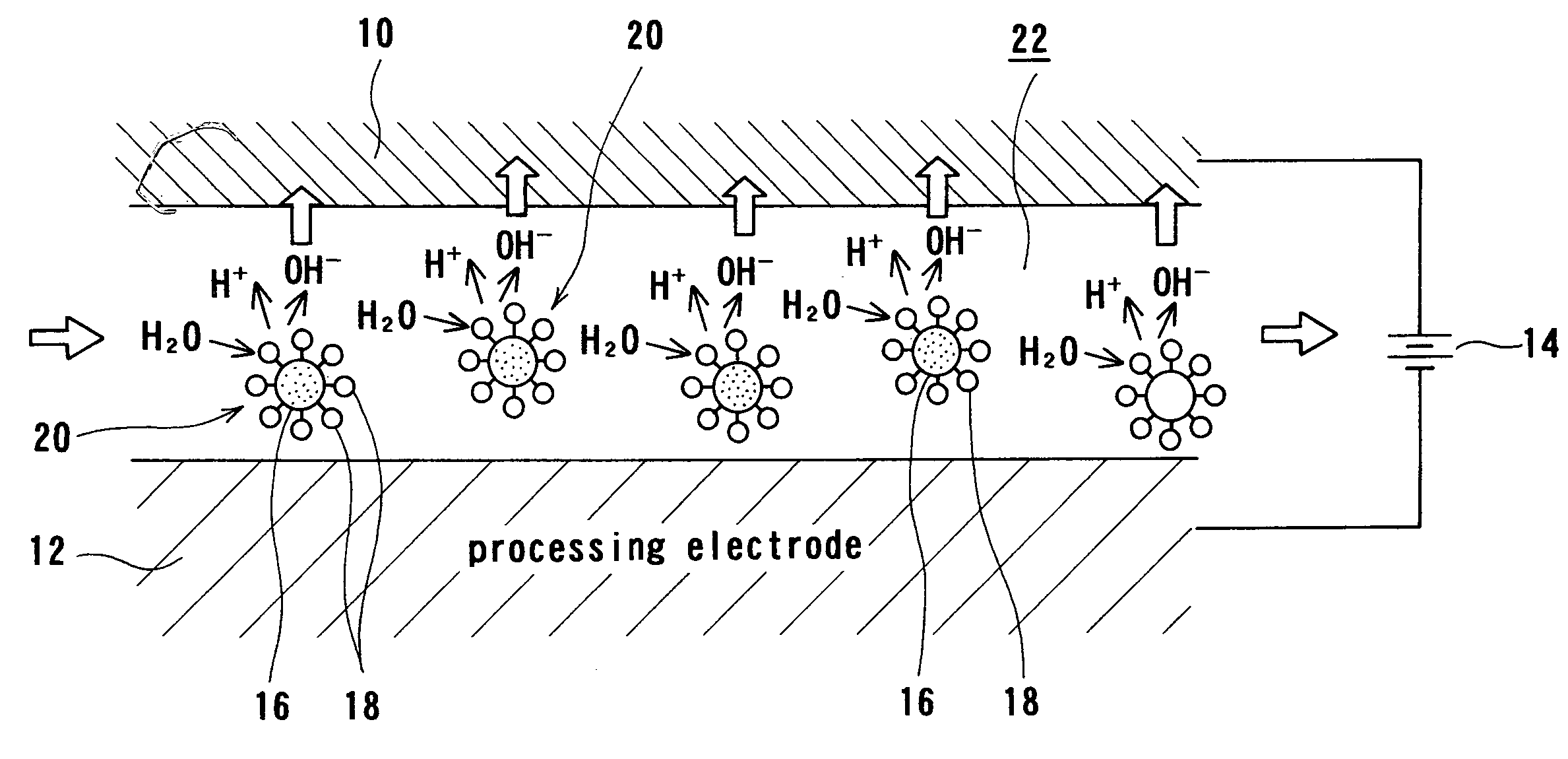Electrolytic processing apparatus and electrolytic processing method
a processing apparatus and electrolysis technology, applied in the direction of machining working media supply/regeneration, manufacturing tools, lapping machines, etc., can solve the problems of large number of defects that may be produced to deteriorate the properties of workpieces, inability to avoid contamination of workpieces with electrolyte, and denaturation of the resulting film, so as to increase the efficiency of water dissociation and efficiently perform electrolytic processing
- Summary
- Abstract
- Description
- Claims
- Application Information
AI Technical Summary
Benefits of technology
Problems solved by technology
Method used
Image
Examples
Embodiment Construction
[0088]Preferred embodiments of the present invention will now be described in detail with reference to the drawings. Though the following description illustrates the case of removing a thin film (conductive film), such as a copper film, formed on a surface of a substrate as a workpiece, the present invention is of course applicable to workpieces other than a substrate.
[0089]FIG. 3 is a plan view illustrating the construction of a substrate processing apparatus incorporating an electrolytic processing apparatus according to an embodiment of the present invention. As shown in FIG. 3, the substrate processing apparatus comprises a pair of loading / unloading section 30 as a carry-in / carry-out section for carrying in and out a substrate, e.g. a substrate W having a copper film 6 and a barrier layer as a conductive film (portion to be processed) thereon, as shown in FIG. 1B, a first cleaning machine 31a for performing a primary cleaning of the substrate, a second cleaning machine 31b for p...
PUM
| Property | Measurement | Unit |
|---|---|---|
| distance | aaaaa | aaaaa |
| electric conductivity | aaaaa | aaaaa |
| thickness | aaaaa | aaaaa |
Abstract
Description
Claims
Application Information
 Login to View More
Login to View More - R&D
- Intellectual Property
- Life Sciences
- Materials
- Tech Scout
- Unparalleled Data Quality
- Higher Quality Content
- 60% Fewer Hallucinations
Browse by: Latest US Patents, China's latest patents, Technical Efficacy Thesaurus, Application Domain, Technology Topic, Popular Technical Reports.
© 2025 PatSnap. All rights reserved.Legal|Privacy policy|Modern Slavery Act Transparency Statement|Sitemap|About US| Contact US: help@patsnap.com



